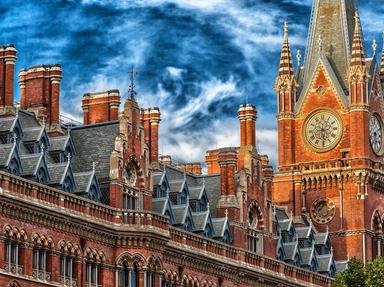Quiz Answer Key and Fun Facts
1. Starting with the letter A; in which Suffolk town, birthplace of poet George Crabbe, would you find the Moot Hall and the Scallop sculpture? The town also gives its name to an annual music festival.
2. B is for a place in Suffolk associated with the invention of radar. Can you name it?
3. C is for a picturesque small Suffolk town, eight miles from Sudbury, which features, among other things, four churches, the remains of a castle and an Augustinian Friary. What is the name of this town?
4. D. What is the name of the small Suffolk town where the source of the River Deben is found?
5. E. In which Suffolk village would you find a hall that has been home to the Dukes of Grafton for over 300 years?
6. F is for a town in Suffolk where the largest container port in the UK sits alongside Landguard Fort. The actor Sir John Mills grew up here and Wallis Simpson stayed in the town during the abdication crisis. Where are we?
7. G. Bill Wyman, bass player with The Rolling Stones, owns a manor house in Suffolk. Where?
8. H is for a village where obscure 19th century poet Robert Bloomfield was born. The village is probably now better known for its links with the RAF. Which village is it?
9. I. Granted its first charter by King John in 1200, what is the name of this large Suffolk town where such luminaries as Cardinal Thomas Wolsey and actor Ralph Fiennes were born?
10. Nothing for the letter J, so onto K now.
This quaint little village, two miles from Hadleigh, was once home to adventure writer Ralph Hammond Innes and has a 'splash' in the middle. What is the name of this pretty village which has appeared on many calendars and postcards?
11. L is for a Suffolk town that grew prosperous in Tudor times thanks to the wool trade and which retains hundreds of quirky buildings from that era. Its other claim to fame is that "Twinkle, twinkle, little star" was written here. Which town is it?
12. M is for a place, thirteen miles to the northwest of Bury St Edmunds, where a large haul of Roman treasures, was discovered in the 1940s. What is the name of the town that gives its name to these treasures and is also known for the nearby US Air Force base?
13. Onto the letter N now. What Suffolk town is known as the home of British Horse Racing?
14. O. Where in Suffolk would you find a 12th century castle and a nature reserve with a military history?
15. P. During the early 19th century, this Suffolk village hit the headlines when a young woman was murdered. What is the name of the village where The Murder in the Red Barn took place?
16. I couldn't come up with anything for the letter Q, so on to R now.
In 1980, some US Airmen serving in Suffolk reported UFO activity in the vicinity of where?
17. S is for a village in the north west of Suffolk that was almost buried in a sand storm in the 17th century. Can you name this village?
18. T. What is the name of the village near Saxmundham that was once home to travel author Charles Montague Doughty and where a German Zeppelin came down in 1917?
19. Nothing for the letter V either, so onto W.
This Suffolk village is host to the British Open Crabbing Championships each summer and, like nearby Southwold, has been popular with artists for many years. What is the name of this coastal village?
20. I couldn't make a question using the letter X and I have combined the letters Y and U to make the last question.
Which Suffolk village beginning with either a Y or a U is associated with the breeding of the famous Suffolk Punch horses?
Source: Author
lizzbett
This quiz was reviewed by FunTrivia editor
Nannanut before going online.
Any errors found in FunTrivia content are routinely corrected through our feedback system.

